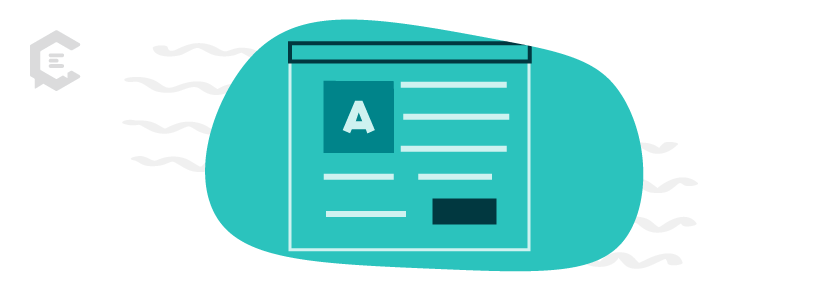If your website is an engine for your business that powers your sales funnel and builds your brand, congratulations. Achievement unlocked. But if you’re like a majority of business owners, for whom that first sentence describes your wildest dreams, this article is for you.
Not to despair! There is still plenty of time to make things right and build that website of your dreams. First, and it may sound funny, you have to know what your website is for. After that, you can put a website content strategy together to ensure your site achieves your business goals.

This is what your website is for…
Ignoring the potentially dozens of factors that influenced you to create your business, websites serve primarily in two ways:
- Sell
- Build
If you are in the business of selling goods by engaging in e-commerce or selling within the service ecosystem (i.e., yourself or your team), you need a website that sells. However, the object of creating a site that does so effectively is not simply to create an online proxy for in-person point-of-sale, though transactions are a critical part of the e-commerce equation. A site that sells — and sells well — has to be so much more.
When you envision the act of selling online, experts suggest you should do so in a holistic and all-encompassing way. The same principles ring true now, in the age of Web 4.0 and the growth of mobile, voice search, artificial intelligence, and semantic web practices, as they did then. Building a website that sells in today’s internet is ultimately as much about the thing being sold as it is about how it gets sold.
The other primary function of a website is to build. Think building in terms of brand awareness and a customer base — for most businesses, especially in the service realm, this is the overriding emphasis of online engagement.
Success, in both regards, whether you’re in the sell or build camp, comes down to connectivity — building it, sustaining it over time, whether that time frame includes the life of your brand or the mere seconds you have to influence a visitor’s next click. How well you connect to your audience and to what degree you reduce friction along their journey to conversion are critical to the overall success of any online endeavor.
We’ll come back to this notion of reducing friction along the sales cycle, but first, here’s your next step in developing a website content strategy.
Create your business’s value proposition
Every business has a thesis. It’s the ‘what.’
Your revenue stream ultimately depends on what your company or organization does differently for its customer base than its competitors. However that is expressed, as a value proposition, a company promise, or declarative statement, that is the thesis to which the rest of your company’s actions and messaging should refer back.
So, do yourself a favor and quickly open a Word doc or write a note on your phone. In one sentence, articulate what you do.
Here are two examples:
- “Tino’s Tea Parlor offers the finest selection of handcrafted teas in North America.”
- “Pilar’s Polish Sausage is the number one socially responsible mystery meat provider to all of downtown Waukesha.”
These are, of course, fictional, but it’s important to step back on occasion and establish or re-establish that statement or two that can serve as an anchor for your website messaging and experience. To drive a compelling story about your brand across your web copy, it will be important to keep this value proposition concise and consistent with your company’s brand voice. It can then be reworked and deployed throughout to give visitors a sense of familiarity as they navigate the various sections of your website.
At the same time, as we are elevating the ‘what,’ it is important not to relegate your ‘why’ to the About Page of your website. The two should find harmony with one another, your ‘what’ acting as an anchor and your company’s ‘why’ punctuating copy throughout and acting as a narrative thread, tying sections of your website together.
If you sell, here’s what you should do
If your site is optimized to sell, each page should compel an action — a button to click, a form to fill out — moving visitors closer to conversion as part of your website content strategy.
Internal linking or ‘interlinking’ between pages on a website is another tool you can, and should, use to enhance the circulation of visitors through your site.
Jerri L. Ledford states the purpose and reinforces the importance of internal links in her evergreen ‘SEO Bible.’ In it she says,
“You should also have links that lead from one element (like a blog post) to other important elements (like an archived article or news clipping on your site), so site visitors moving through the information they’re examining on your site is a natural process that takes place without too much difficulty or thought.”
Put simply, any page on your website that fails to enhance the sales journey is a missed opportunity.
If you serve, here’s what you should do
Likewise, if your website is built to promote a service, the end goal of your website content strategy should be your only goal. Get people to engage. Get them to commit. Use the tools mentioned above (calls to action, forms, interlinks) to give visitors a sense of agency in their search for the perfect service, but ultimately, lead all roads into one: conversion.
Here are seven different action items to consider:
- Calls to action: Your buttons can include a personal twist.
- Contact forms: Give them a form to fill out, better yet, give them a reason to fill it out.
- Add social media: Have a juicy social feed? Use your website to pick up followers.
- Content subscription: Content direct to email is a great way to build trust and show value to your followers.
- Downloads: Downloadable eBooks and white papers are a great way to capture data on your audience and build thought leadership.
- Freebies: Everyone loves free stuff.
- Brand story: Your About page should never be static. Use it as an opportunity to take readers on a journey through your brand. A good story will compel a good, hearty click.
Employing these features as part of your website content strategy will help center the focus of your website around your visitor, from both an experiential standpoint and a messaging one.
By elevating their interests, you build confidence and a sense of ego (in a good way) in your customers. Isn’t it the best, after all, when you feel like you’re the only one in the room? Good website design and attention to detail, both in regard to on-page and off-page optimization, can do this for visitors to your site.
In either case, whether your immediate goal is to sell goods or services, your long-term goal is to build brand awareness or engage in strategic brand management.
Your website should provide a platform to showcase innovation, cultivate thought leadership, and assert your position in the marketplace. Each page should build on your central thesis and make your visitor more aware of your brand’s equity and strengths in a competitive landscape.
How to set your website up for success:
Build your target audience profiles
To influence your audience, you have to know them first. As part of your website content strategy, get to know them and isolate emerging personalities. Use data to build multiple experience profiles — that is, the multitude of ways you expect users of different types to engage with your site and content. Scan your analytics to get a sense of how people are using your website — where they are entering and exiting and how long they’re hanging around.
Understand that not all of your targets can be reached through your website. Social media, email, paid ads, and other marketing channels can be target-rich environments equal to or exceeding the performance of your website, depending on your industry.
Understand, too, the behaviors of your audience and, most importantly from an SEO perspective, what questions are being asked by your audience. You need to ensure that your content answers these questions better than your competition, whether directly or indirectly.
Design, redesign accordingly
Once you have established a thesis and have a developed sense of your position in the marketplace through your website content strategy, it’s time to start greasing the gears of your sales engine, aka your website. Use your thesis to stake out your position and tell your story relentlessly. Get visitors clicking, scrolling, filling out forms.
Better navigation
Make sure that your website architecture is set up in an intuitive way around your inbound sales funnel. Remember that Navigation = Narration. Site navigation provides visitors with a kind of ‘choose-your-own-adventure’ experience.
But just like the popular 1980s book series of the same name, the outcomes are predetermined no matter the adventure one chooses. Where a visitor to your site decides to go, you ultimately have no say in this. But the thesis of your website should act like a lighthouse, always bringing them back to the desired outcome.
Eliminate waste
Also, in keeping with our theme of reducing friction, it’s high time you did some spring cleaning on that site of yours. Excess weight on websites (i.e., irrelevant or redundant content) is one of the leading causes of preventable SEO catastrophes. Trim the fat, and don’t be afraid to be generous with those cuts. As content producers, we should stick to what we’re best at, what people come to us for in the first place.
Answer questions
Like we mentioned before regarding audience profiles, your site should provide the answers to the questions your visitors are asking. Not the answers to questions they never asked. Add this component into your website content strategy to ensure you are properly addressing your readers’ main concerns or questions.
It may feel necessary to humanize the occasionally arid landscape of B2B content, but please refrain from creating excess content about office cats or Pizza Fridays. That brand of filler content has a place, but it’s more likely on social media or an internal company newsletter.
Better content
If you are concerned about your content being too dry or unapproachable, this can be resolved through expert word craft. A talented copywriter should be able to lend artistry and genuine intelligence to a given topic. Gone are the days of keyword stuffing and regurgitated nonsense passed off as optimized content.
Here are five boxes to check for better content:
- Make an immediate impact. Website copy shouldn’t read like a novel. Don’t leave visitors in suspense when it comes to showing your value.
- Establish a brand voice. You know Miles Davis when you hear that first blue note, or the fuzz-induced howl of Hendrix. The tone and position of your content should be no less distinct.
- Intent-based keyword research. Look beyond the words your audience is using to why they’re using them.
- Images that enhance the story. Break up the monotony with imagery that reinforces your point and makes your reader want to scroll down. Be sure to optimize them, too!
- Track, measure, repeat. Use analytics to reveal audience likes and dislikes. Stick to what works and repeat that formula, switching up subjects and keywords according to your research.
Better SEO
When designing or redesigning the site of your dreams, stick the landing with strong technical SEO principles. Your website content strategy should contain an SEO plan to ensure you are meeting search intent and properly optimizing your site.
So many companies do the bare minimum or less when it comes to search engine optimization. But it’s not that hard when you have the necessary skill set to excel in the mission-critical area of optimization. We can’t stress this enough: SEO is important, and it’s not rocket science.
So, acquire that skill set, and learn how to execute proper due diligence — intent-based keyword research, market and competitive analysis, and sorting out which of the more than five hundred yearly algorithm changes you should pay attention to. The more effort you put into SEO, the more reward you’re likely to get out of it.
That’s why it’s important to make sure you have the right tools at your disposal when developing your SEO strategy. Think of it like attempting to cook your favorite foods at home. Most dishes aren’t that challenging to execute, as long as you have the right ingredients in your kitchen cabinet. The same principle can be applied to both on-page and off-page (technical) SEO.
Here is an abbreviated checklist of technical SEO boxes to check — the key here being both discoverability and functionality (because Google and other search engines prioritize message clarity and site functionality in their search results):
- Schema.org markup
- XML Sitemap
- Site indexing, Crawling (redirects, errors, etc.)
- Page Load Speed
- Canonical Tags
Creating a website content strategy that works for you
We began by asking what a website is for. As valuable a tool as any, your website should be an engine capable of driving high-quality leads toward your end goal of conversion. Your key to building the site of your wildest dreams is knowing your thesis and designing accordingly. Keep things fresh with updated, optimized content.
*The companies and value props depicted above are fictitious. Any resemblance to existing businesses would be hilarious.
Need help maximizing your website and building out your content stream? Talk to a content specialist at ClearVoice to learn more about the value of content strategy and what our team of talented content professionals can do for your business.






